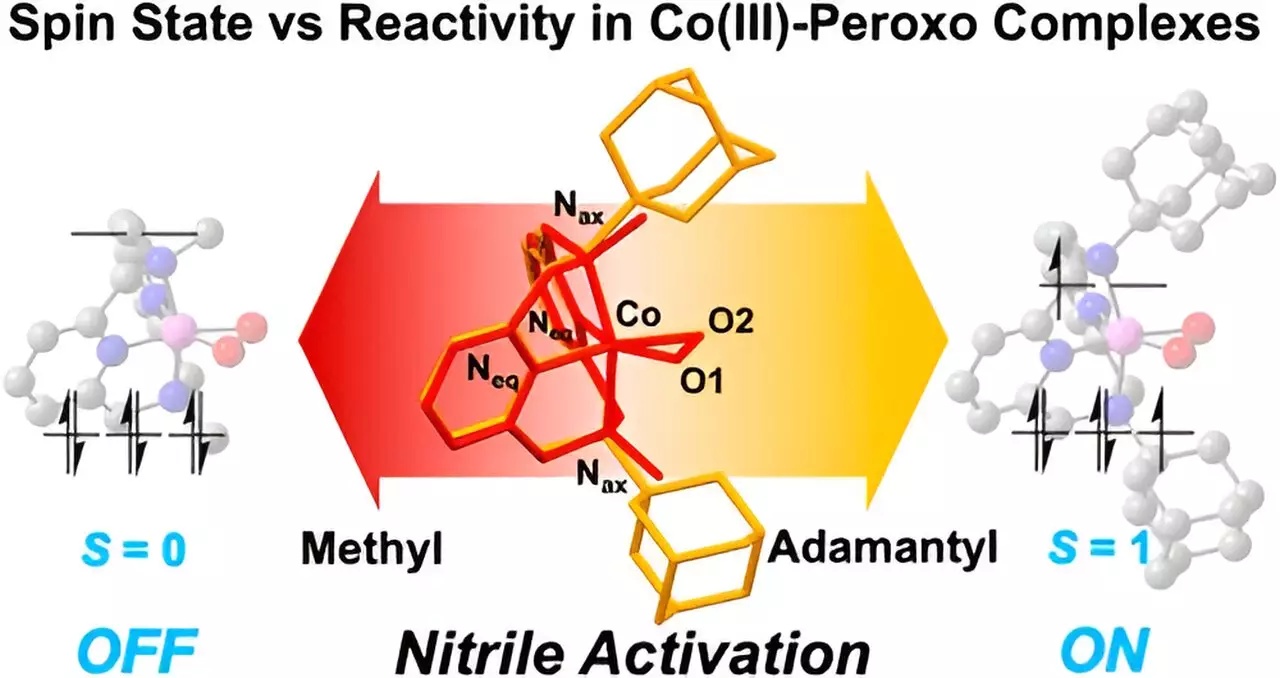Recent research led by Professor Jaeheung Cho at UNIST’s Department of Chemistry has shed light on the intricacies of cobalt(III)-based metal complexes and their interactions with nitrile substances. This groundbreaking study, published in the Journal of the American Chemical Society, provides significant insights into the mechanisms behind nitrile activation, propelling the potential development of novel pharmaceutical agents. Nitriles, which are prevalent in both the pharmaceutical and agricultural industries, often exhibit challenges in reactivity, making this research particularly timely and relevant.
A key finding of the study is the profound influence of metal spin states on the reactivity of cobalt compounds with nitriles. Spin states refer to the orientation of the spin of electrons within an atom, which can significantly affect a metal complex’s properties and reactivity. The researchers discovered that even minor alterations in the metal’s characteristics can drastically alter the speed and efficiency of chemical reactions. This revelation underscores the importance of molecular design in optimizing reaction conditions for specific applications, particularly in drug development.
The investigation employed an innovative structure known as the “Macrocyclic Pyridinophane System,” which allows for flexible modifications in cobalt structures. This adaptable framework facilitated a series of experiments that illustrated the varying reactivity of cobalt compounds based on their functional groups. Notably, the inclusion of larger adamantyl groups led to significantly enhanced activation of nitriles, while smaller methyl groups resulted in negligible reactivity. Such findings suggest that the sterics and electronics conferred by these functional groups play a crucial role in determining the chemical outcome.
The synthesis of cobalt(III)-peroxo species that can efficiently react with nitriles at ambient temperatures is particularly promising for anticancer drug development. Cobalt complexes have historically been employed in various biochemical pathways, but the ability of these complexes to engage with nitriles opens new pathways for therapeutic intervention. The first author, Seonghan Kim, emphasized that the research catalyzed the identity of cobalt complexes with differing spin states, showcasing their relationship with nitrile reactivity.
The innovative work conducted by Professor Cho and his team marks a significant step forward in our understanding of cobalt(III)-based metal complexes and their interactions with nitriles. By illustrating the critical role of spin states and structural modifications, this research paves the way for future applications in drug discovery, particularly in developing targeted therapies for cancer and other diseases where nitriles play a pivotal role. As the landscape of pharmaceutical development continues to evolve, these findings could lead to revolutionary strategies in the synthesis and application of new therapeutic agents.

